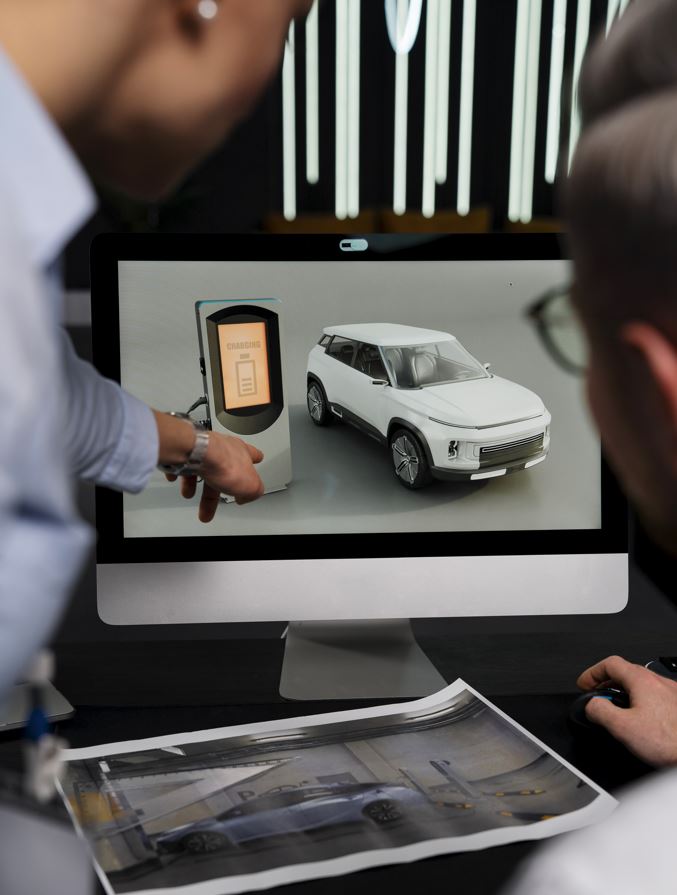The journey from an initial idea to a fully functional vehicle on the road is a complex, multi-stage process involving a myriad of specialized teams, advanced technologies, and rigorous testing. This lifecycle, spanning several years, requires meticulous planning, design, engineering, and validation. Here, we will explore each stage of the automotive product lifecycle, highlighting key activities and providing specific examples to illustrate this intricate process.
Several sources are available on the internet highlighting these concepts. Mckinsey is known as a top player in automotive product processes and research, Deloitte has a popular automotive study published annually, and new reputable emerging blogs such as from EV-Global give a more comprehensive, unbiased and easy-to-understand view on a very technical subject.
- Stage 1: Concept and Feasibility
The automotive product lifecycle begins with the concept and feasibility stage. This is where ideas are born, and their viability is assessed.
Key Activities:
- Market Research: Understanding consumer needs, market trends, and competitor offerings.
- Concept Development: Brainstorming sessions to generate new vehicle ideas that meet identified market needs.
- Feasibility Studies: Evaluating technical, financial, and regulatory feasibility.
Example: When Ford began developing the Mustang Mach-E, their first all-electric SUV, they conducted extensive market research to understand the growing demand for electric vehicles. They assessed the feasibility of creating a vehicle that would meet performance expectations while being eco-friendly and cost-effective.
- Stage 2: Design and Development
Once a concept is deemed feasible, the design and development stage begins. This stage focuses on creating detailed designs and prototypes.
Key Activities:
- Styling and Aesthetics: Designing the vehicle’s exterior and interior appearance.
- Engineering Design: Developing detailed blueprints for the vehicle’s structure, systems, and components.
- Prototyping: Building physical and digital prototypes for initial evaluation.
Example: Tesla’s development of the Model S involved designing a sleek, aerodynamic exterior while incorporating advanced engineering for battery placement and electric drivetrain integration. Digital prototyping allowed them to simulate various design aspects before building physical models for further testing.
- Stage 3: Validation and Testing
Validation and testing are critical to ensuring the vehicle meets all performance, safety, and regulatory standards.
Key Activities:
- Component Testing: Individual parts and systems are tested for durability, reliability, and performance.
- Full Vehicle Testing: Complete vehicles undergo rigorous testing, including crash tests, environmental simulations, and real-world driving scenarios.
- Regulatory Compliance: Ensuring the vehicle meets all safety, emissions, and other regulatory requirements.
Example: The Chevrolet Bolt EV underwent extensive validation and testing phases, including crash tests to meet safety standards, range testing to ensure reliable battery performance, and environmental testing to verify the vehicle’s resilience under extreme conditions.
- Stage 4: Pre-Production and Tooling
In this stage, preparations are made for mass production. This includes setting up production lines and ensuring that manufacturing processes are efficient and reliable.
Key Activities:
- Tooling: Developing and manufacturing the tools and molds required for mass production.
- Production Line Setup: Assembling the production line, including robotics and assembly stations.
- Pilot Production: Running a small batch of vehicles to identify and resolve any production issues.
Example: Before mass-producing the BMW i8, BMW set up specialized production lines with advanced carbon-fiber-reinforced polymer (CFRP) manufacturing capabilities. They conducted pilot production runs to fine-tune their processes and ensure high quality and efficiency.
- Stage 5: Production and Assembly
With the production line set up and tested, full-scale manufacturing begins.
Key Activities:
- Manufacturing: Mass-producing vehicle components and assembling them into complete vehicles.
- Quality Control: Continuous monitoring and inspection to ensure each vehicle meets stringent quality standards.
- Supply Chain Management: Coordinating with suppliers to ensure timely delivery of parts and materials.
Example: Toyota’s production of the Corolla involves a highly efficient assembly line process known as the Toyota Production System (TPS). This system emphasizes lean manufacturing, just-in-time production, and rigorous quality control, ensuring high levels of efficiency and product consistency.
- Stage 6: Distribution and Sales
Once vehicles are produced, they are distributed to dealerships and sold to customers.
Key Activities:
- Logistics: Managing the transportation of vehicles from factories to dealerships.
- Marketing and Sales: Promoting the new vehicle through advertising campaigns, dealership events, and test drives.
- Customer Delivery: Ensuring a smooth handover of the vehicle to the customer, including final inspections and paperwork.
Example: The launch of the Jeep Gladiator involved a comprehensive marketing campaign showcasing its off-road capabilities. Vehicles were distributed to dealerships across the country, where potential customers could test drive and experience the new model before making a purchase.
- Stage 7: Post-Sale Support and Service
The lifecycle continues even after the vehicle is sold, with ongoing support and service to maintain customer satisfaction and vehicle performance.
Key Activities:
- Warranty and Repairs: Providing warranty coverage and repair services for any defects or issues that arise.
- Maintenance Services: Offering regular maintenance services to keep the vehicle in optimal condition.
- Customer Feedback: Gathering feedback from customers to inform future product improvements and developments.
Example: Honda offers comprehensive post-sale support for its vehicles, including extended warranties, maintenance packages, and customer service hotlines. They actively collect customer feedback to enhance future models and improve overall customer satisfaction.
- Conclusion
The automotive product lifecycle is a sophisticated and meticulously managed process that transforms a concept into a road-ready vehicle. From initial market research and concept development to rigorous testing, mass production, and post-sale support, each stage is crucial in delivering a high-quality product that meets consumer expectations and regulatory standards. By understanding this lifecycle, we gain insight into the immense effort and innovation behind every vehicle on the road.
You can learn more about such topics from reputable automotive tech blogs such as Inside EVs, EV-Global, and Top Gear.


